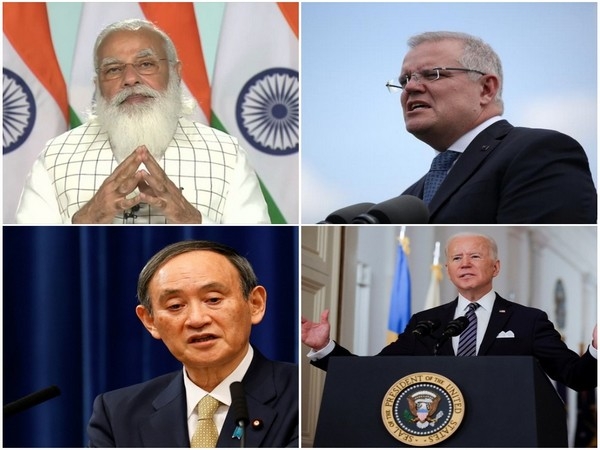Is QUAD first step towards Asianism?
Total Views |
Japan's former Prime Minister Shinzo Abe's vision that he expressed in India's Parliament's haloed halls in 2007 has finally been realized. The Security Quadrilateral Dialogue' QUAD' finally saw the light of the day, 14 years since its formal revelation. A big success for ex-PM Abe, QUAD is undoubtedly one of Japan's biggest attainments in the new Reiwa Era that began under Emperor Naruhito's ascension in 2019.
These days, the narrative of QUAD usually revolves around the reports emerging from the U.S. and Australia. Perhaps the English-speaking and globally well-entrenched think tanks make a more remarkable impression than their Indian and Japanese counterparts. But one thing is for sure, there are India-Japan strategic underpinnings in this quadrilateral grouping that standout. These underpinnings have reverberations of Asianism.

It is crucial to comprehend that Japan is no marginal player in global geopolitics. It was the second-largest economy in the world not long after its defeat in the Second War. In a few decades, it became a central high-end manufacturing hub until the U.S. caught fancy of the People's Republic of China (PRC) and allowed it into the World Trade Organization in 1991. The Belt and Road Initiative, the Digital Silk Route, the Polar Silk Route, and PRC's other debt trap plans, therefore, lie in the economic heft accorded by the entry into the WTO and the wanton shift of manufacturing from the West to the PRC.
The economic heft, followed by military expansion, has allowed the PRC to expand aggressively in the Pacific, cutting across the island chains spanning from inner-most Taiwan and South China Sea islands and reefs to outer-most Guam. The QUAD could have quickly been initiated when China began claiming and reclaiming atolls and reefs outside its exclusive economic zone (EEZs) in the late 2000s. However, the West did not wake up until the People's Liberation Army Navy (PLAN) began making visits to Guam's waters and extending North Korea's missile reach to U.S territory in Micronesia. Having penetrated the breaches through its continuously strengthening navy, the PLA is now preparing to execute its final step before it becomes a full-fledged 'blue-water' navy. And that last step is the movement towards the third-island chain, which consists of Hawaii. The U.S. threat perception perhaps has been one of the reasons for the speedy activation of QUAD.
As PRC pushes its navy into the third 'island chains,' it will begin to exercise greater supremacy over the territories that constitute the first and second island chains. Japan has regularly intercepted PLA strategic bombers making aerial incursions in the Miyako Straits and naval infiltrations around Senkaku Islands. The North Korean missiles have flown over the Miyako straits and over Japan's Tohoku region. With escalating incursions, Japan could shift gears, be held back by post-World War II penalties, and mature its self-defense stance to a more offensive-defense stance. The first gear shift could be the reinterpretation of the Article IX of the Japanese constitution, a vision that Shinzo Abe's and Prime Minister Yoshihide Suga's Jimintō party has long held.
Japan's threats are not merely territorial nor delimited to the South China Sea and the Pacific Ocean. With a falling population, Japan cannot become a manufacturing hub equivalent to what China has been over the last four decades. However, it intends to resume the position of a leading global research and innovation node and be an essential stakeholder in Asia, Africa, and South America. Indeed, freedom of navigation in the contested South China Sea will be necessary for Japan, but more important will be the stability in the market it intends to access. The threat emanating from autocracy is not delimited to the Indo-Pacific. Being in South Asia, India often experiences terrorism burning in West and Central Asia. With a breeze of peace blowing in West Asia, owing to the thaw in the millennia-old struggle between Israel and the Arab World, the supporter of this hearth could change. Here, the Japanese strategic concept of 'Arc of Freedom and Prosperity' becomes as important as the QUAD. Hence for Japan, and so for India too, the 'Arc of Freedom and Security' – spanning from Eastern Europe, West Asia, India, South-East Asia and finally culminating via Japan into Eastern Russia – is equally vital as QUAD.
Within the QUAD, the Japan-India relations are unique. Not only are they the most proximate to PRC, but they are also conjoined by a similar threat matrix laid in the form of multiple state and non-state proxies. To counter these threat matrices, Japan could emphasize three trilateral outside the QUAD: the India-Japan-Russia, India-Japan-France, and the India-Japan-ASEAN. Both India and Japan will have to calculate regional sensitivities and rise to their immediate neighbors' expectations. These trilaterals and QUAD will be crucial for eventually pushing their common G4 goal of making it to the UN Security Council.
In his 2007 speech to the Indian parliament, PM Shinzo Abe had vividly mentioned the interactions between Swami Vivekananda and Tenshin Okakura, the author of The Book of Tea, published in late 1800s, and the friendship Okakura kept with Swami Vivekananda's disciple Sister Nivedita. Abe perhaps indicated the significance of 'tea' as a means to find Asian solutions to Asian challenges. India and Japan should not limit themselves to QUAD. They have a lot to discuss over a teacup with other nations for peace and prosperity in Asia. Tea could bring the best out of the Reiwa era, a beautiful harmony.
.
.
